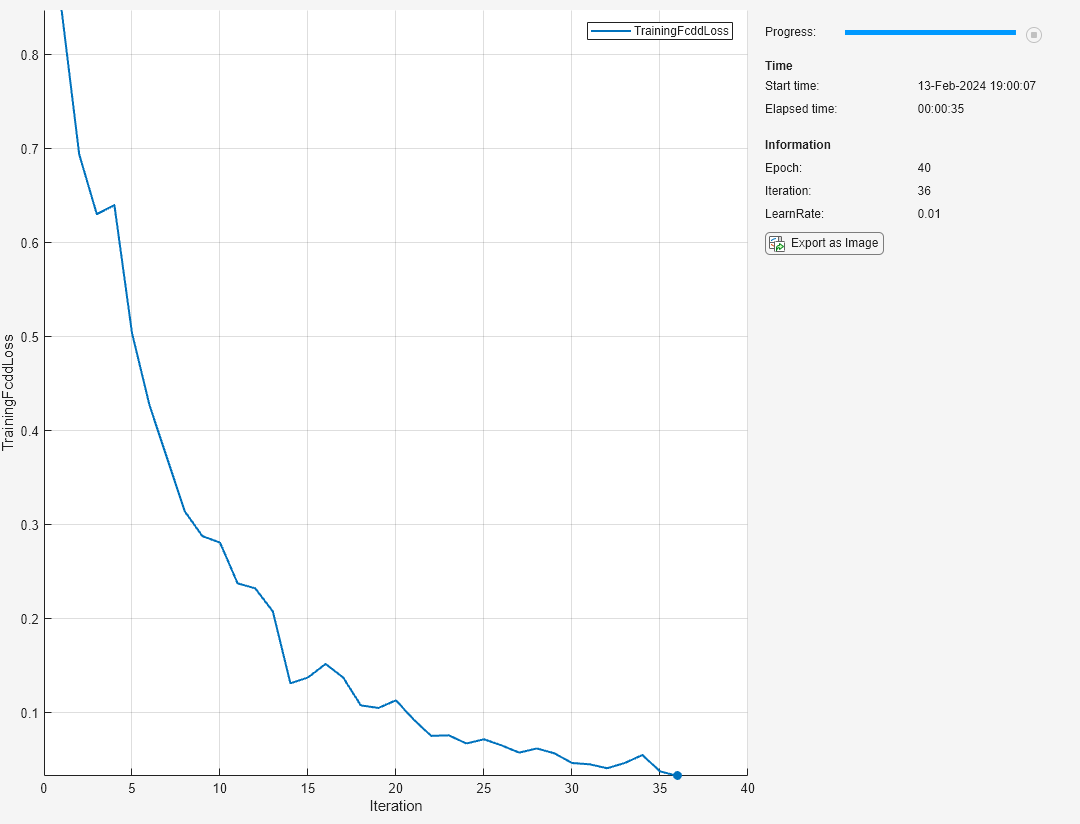trainFCDDAnomalyDetector
Train fully convolutional data description (FCDD) anomaly detection network
Since R2022b
Syntax
Description
detector = trainFCDDAnomalyDetector(normalData,anomalyData,untrainedDetector,options)untrainedDetector. The
training data consists of normal images in normalData and anomaly
images in anomalyData. The options argument
controls options for training.
Note
This functionality requires Deep Learning Toolbox™ and the Automated Visual Inspection Library for Computer Vision Toolbox™. You can install the Automated Visual Inspection Library for Computer Vision Toolbox from Add-On Explorer. For more information about installing add-ons, see Get and Manage Add-Ons.
Note
It is recommended that you also have Parallel Computing Toolbox™ to use with a CUDA®-enabled NVIDIA® GPU. For information about the supported compute capabilities, see GPU Computing Requirements (Parallel Computing Toolbox).
detector = trainFCDDAnomalyDetector(normalData,anomalyData,untrainedDetector,options,Name=Value)
